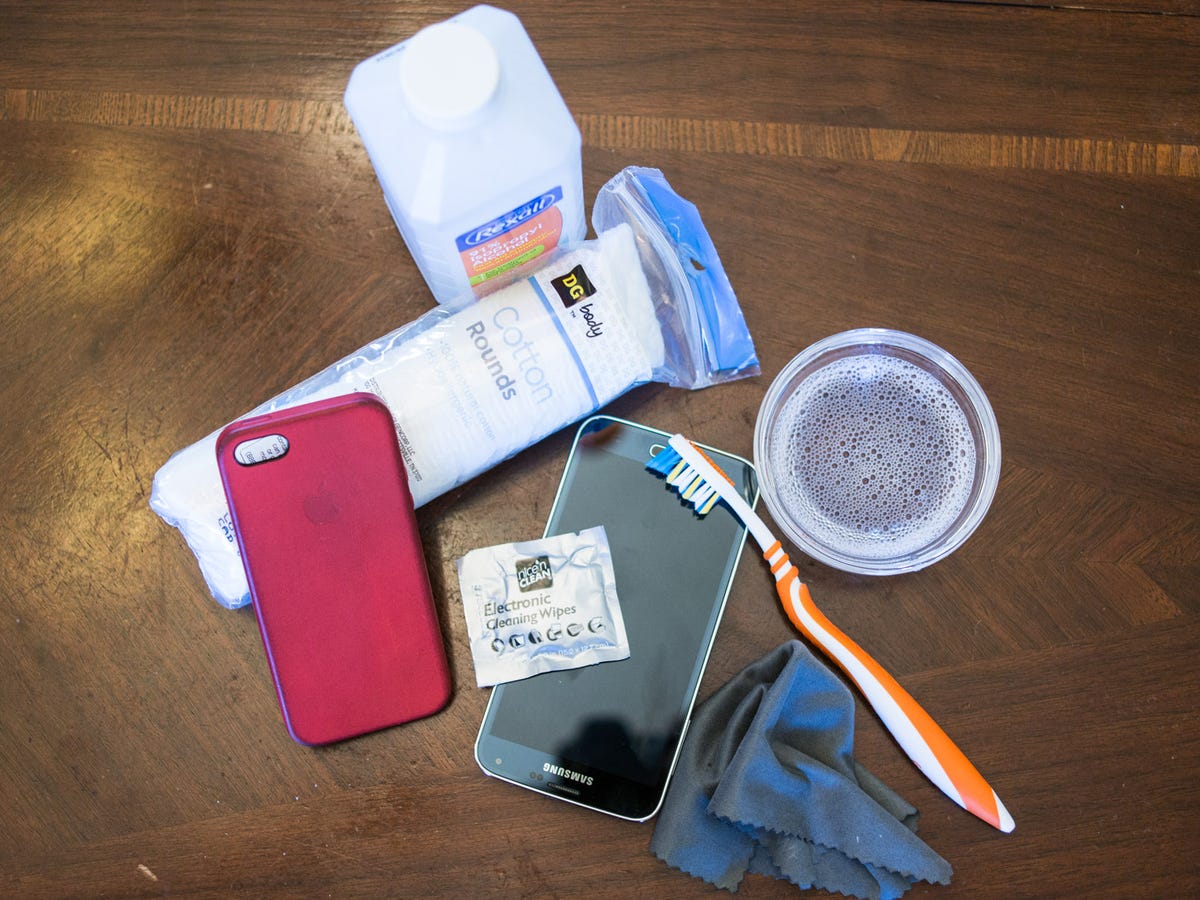
Jason Cipriani/CNET
Let’s face it, our smartphones and tablets are some of the dirtiest things we touch on a daily basis. Touch screen devices are known to be a safe harbor for all sorts of germs and bacteria. Companies like Corning are attempting to create glass that kills germs, but until then, this is a fight we have to go alone. Oh, and don’t forget about the case we have protecting our devices — those can be just as filthy (if not worse).
With that in mind, it’s a good idea to regularly clean your device of choice. Not only does a thorough cleaning go a long way in keeping you from getting sick, but it can also help prolong the life of your device.
Case cleaning
Depending on the material the case is made of, cleaning the case is straightforward and shouldn’t take long at all.
The standard cleaning tools for a case include some warm water, a drop of soap, and a soft cloth.
Start by removing the case from your device, and dampening part of the cloth with your soap solution. (Don’t go overboard with the soap, a drop or two will be more than enough.) Wipe down the case, ensuring you get the dirt and grime off where visible. For those who are more germ-conscious than others, use a cotton swab and a dab of isopropyl alcohol.
Using a second cloth, or an unused portion of the same cloth, wet it with clean water and wipe off any soap reside left behind. You can either let the case air dry, or wipe it down with a towel. To speed up drying time for those cases with cloth backs, use a hair dryer on low.
Device cleaning
This is where things get a bit more complicated. Cleaning a case, without any electronic components, is easy. Cleaning a smartphone or tablet, worth hundreds of dollars, and packed full of electronics, leaves room for a lot to go wrong.
But as long as you take your time and use common sense, you should be fine. Make sure you power off your device before you start wiping it down, and never spray a cleaning solution directly onto your device; just to be safe.
I recommend rounding up the same cleaning equipment as we did for a case, with one addition: a dry toothbrush. The toothbrush will help get lint and debris out of the random ports on a device. In the past I’ve used cotton swabs or Q-tips, only to leave behind small pieces of cotton in the ports. Don’t use a ton of pressure with the toothbrush, and let the bristles do the work for you. The last thing you want to do is break the charging port on your device because you used a little too much pressure.
Using a similar solution of a little soap (again, one drop for a smaller device is more than enough) and warm water, dampen a soft cloth and wipe down your device. Be sure to use another cloth, or an unused portion of the same cloth, with clean water to wipe off any residue.
You can either let the device air dry, or wipe it down with a soft cloth. Only after you’re sure there’s no liquid left on the device, power it back up.
Another method to quickly clean off your device, is to use pre-made electronic wipes. I usually have one or two of wipes in my backpack or car, just in case. You can pick them up from somewhere like Wal-Mart or Amazon for relatively cheap, and they do a decent job. A small tidbit of advice when going this route — avoid scented wipes.
Editors’ note: It’s spring cleaning time! You can view all of our spring cleaning tips and tricks here. Keep checking back for more tips.
This How To post was originally published on April 9, 2014, and has been updated to include new information.



